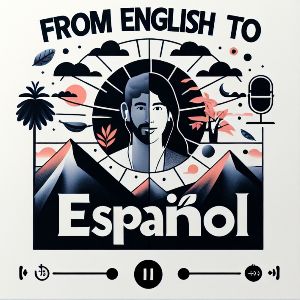Mastering the Spanish Preposition "Desde": A Guide for Learners
April 18, 2025Categories: Spanish Grammar Rules, Lesson


From English to Español: Bridging the Grammar Gap with Alberto Rodriquez
Welcome to "From English to Español: Bridging the Grammar Gap", the podcast created specifically for English speakers ready to take their Spanish skills to the next level. Each episode dives into the core differences and surprising similarities between English and Spanish grammar, unraveling the complexities of the language in a way that’s clear, practical, and easy to follow. We'll break down essential concepts like verb conjugations, gendered nouns, and the tricky subjunctive mood, offering insights and tips that simplify these new rules and help you avoid common pitfalls. By comparing Spanish structures directly with English, you’ll quickly understand how to adapt what you already know into accurate, natural Spanish. Whether you’re a beginner or looking to brush up on advanced topics, this podcast is your comprehensive guide for bridging the gap between English and Spanish grammar, so you can speak and write with confidence. Join us daily for a new rule or concept, complete with practical examples, exercises, and memorable explanations that make learning Spanish engaging and enjoyable. Perfect for self-learners, students, and anyone serious about mastering Spanish grammar, "From English to Español" is your go-to resource for building fluency from the ground up.
Understanding the Use of "Desde" in Spanish
Learning Spanish involves mastering a variety of grammar rules, and prepositions play a crucial role in constructing meaningful sentences. One such preposition is desde, which translates to "from" when applied to contexts related to time and space. This lesson will help you understand the appropriate use of desde, backed by examples and highlighting exceptions to the rule.
Using "Desde" in Temporal Contexts
When referring to time, desde is used to indicate the starting point of an action or event. It is akin to stating when something began or from which point in time something exists. Here are some examples:
- Vivo aquí desde 2010. — I have lived here from 2010.
- Estudio español desde el año pasado. — I have been studying Spanish since last year.
- No como carne desde marzo. — I have not eaten meat since March.
Notice how desde indicates the initiation of the action, emphasizing when the situation originated.
Applying "Desde" in Spatial Contexts
Spatially, desde signifies a certain point in space, often indicating where something starts. Consider these examples:
- Puedo ver el mar desde mi ventana. — I can see the sea from my window.
- El río corre desde las montañas. — The river runs from the mountains.
In these examples, desde helps specify a point of origin in space.
Understanding Exceptions and Special Cases
While desde is straightforward, there are peculiar cases where it is paired with que to form desde que, translating to "since" or "ever since." This often introduces a subordinate clause:
- No he visto a Juan desde que se mudó. — I haven't seen Juan since he moved.
- Desde que comenzó el curso, he aprendido mucho. — Since the course began, I have learned a lot.
This formula is widely used to denote a timeframe for ongoing events.
It is important to note undesired confusion between desde and de. While both can mean "from," they are contextually distinct. Desde suggests a point of origination in time or space, whereas de may simply indicate belonging or separation.
For example:
- La carta es de Luis. — The letter is from Luis. (ownership)
- Vengo de la tienda. — I come from the store. (simple origin)
Practice and Learning Resources
To enhance your understanding of concepts like these, consider exploring comprehensive learning resources. These can provide structured lessons and exercises designed for learners at all levels. For a structured approach, consider ScienceBasedLearning.com as a source of valuable learning materials and guidance. Get access to more lessons and practice materials with options curated for different skill levels. Get Your Copy today!